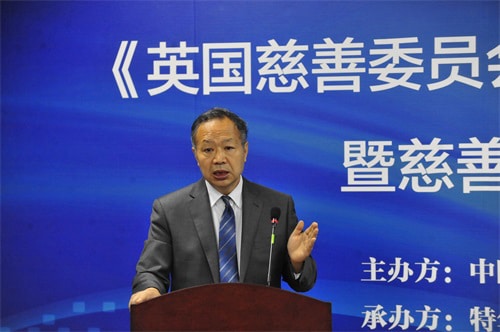Editor’s Note
This article was originally published by the Phoenix Network on the 13th of July 2018. What follows is CDB’s translation. Please find the original here.
Have you been following how the world’s rich manage their enormous wealth?

Warren Buffet (left) and Bill Gates (right). Image source: Internet
Bill Gates, the world’s richest man and founder of Microsoft, has said that 95% of his personal wealth will go to the Gates Foundation, and will be donated and used to promote equality in worldwide health and education over the 20 years after the deaths of himself and his wife. What’s more, the Gates Foundation has also attracted the “god of stocks”, Warren Buffet, who makes huge donations to the foundation every year.
Facebook founder Mark Zuckerberg has also announced that he will donate 99% of the stocks he owns to charitable causes.
Like Zuckerberg, Ma Yun (Jack Ma) and Ma Huateng have successively donated stocks and shares to be used in charitable sectors, including environmental protection, medical care, education and culture. The Li Ka Shing Foundation has so far donated over HK $20 billion to projects covering 27 countries and regions worldwide, with a focus on supporting education and medical projects.
In 2017, He Xiangjian, the founder of Midea, announced a plan to donate six billion Yuan to charity. Out of that, he donated 100 million Midea Group shares (with a market value of 4.3 billion Yuan) to establish the “He Trust”. He also donated two billion Yuan in cash to establish the He Foundation in Guangdong Province, of which 500 million Yuan went into establishing a charitable trust to be used for the construction of the Shunde district. The remaining 1.5 billion Yuan will be donated to five charitable associations in the Beijiao township of Shunde district, in Foshan, Guangdong Province, with professional charitable organisations responsible for the standard operations of the projects.
In addition, the first family charitable trust to appear in China, the Wanxiang Trust – Lechun Family Charitable Trust, has assets totalling RMB 20 million, with the trustor choosing to remain undisclosed. The trust term is perpetual, and the trust was filed on the 26th of September 2016 with the Hangzhou Civil Affairs Bureau.
In recent years, increasing numbers of China’s wealthy have begun to place importance on the positive role charity can play in family wealth inheritance. They have begun to deeply consider the issue of how to manage the wealth needed beyond family life. Charity has advantages such as the ability to enhance family cohesion, isolate wealth risks and establish a family culture. It is generally used as an alternative wealth management tool by the top-level rich.
It seems that the wealthy are no longer satisfied with making one-off donations, and prefer to maintain or increase the value of charitable wealth and continuously carry out good deeds in accordance with their wishes. As a result, the wealthy have become keen on another high-end way of playing with their wealth – personal foundations + charitable trusts.
Charitable trusts are not exclusively for the wealthy
Ordinary people may not dare to emulate the generous charitable acts of the wealthy, thinking that there is a very high threshold for establishing a personal charitable foundation or charity trust, and that such wealth management methods are exclusively for the rich. But what is the reality?
According to Article 8 of the “Regulations on the Management of Foundations” published by the State Council in 2004, Article 2 of the “conditions for the establishment of a personal charitable foundation” indicates that the original fund of a non-public foundation shall not be less than RMB 2 million and must be a monetary fund held in a bank account. This may be somewhat difficult for ordinary people. So what can they do? Charitable trusts provide a new solution.
The “Charity Law”, which was implemented on the 1st of September 2016, defines the concept of the charitable trust. The trustor entrusts their assets to the trustee for charitable purposes in accordance with the law. The trustee manages and disposes of assets in the name of the trustee, and in accordance with the wishes of the trustor, in order to conduct charitable activities. Charitable trusts belong to the “Charitable Trust” section of the “Trust Law”, which was implemented on October 1, 2001. In the section on charitable trusts, “maintaining and increasing value” and “charitable aspirations,” are two goals which can both be realised through the use of a trust as a tool to conduct charity.

Long-term trustworthiness is the foundation of the sustainable development of charitable trusts. Image source: Internet
Compared with foundations, charitable trusts do not have an original funding limit, and are required only to have certain trust assets and to comply with the trust purposes stipulated by the law. Charitable trusts have advantages in terms of establishment procedures, operating costs, and in maintaining and increasing the value of assets. They also have particular features such as freedom of choice in charitable purposes, diversity in defined term lengths, flexibility in the use of funds and abundance in the types of trustors. Trust companies and charitable organisations can both become trustees, and it is a charitable service which both wealthy and ordinary people can use. Charitable trusts are embedded in the overall structure of family wealth inheritance, meaning family charity is not limited to fund and property donations. The flexibility and creativity of trusts have made the extensive expansion of family charity possible.
Three parties are necessary to establish a charitable trust – the trustor, the trustee and the beneficiary. Of these, the trustor can include corporate bodies, social organisations, high net worth families, ordinary families and ordinary people. The trustee can be a charitable organisation or a trust company, or both can act as co-trustees. The beneficiaries of charitable trusts are unspecified members of the public or poor communities.
The former China Banking Regulatory Commission Non-Banking Director and senior expert in China’s trust industry, Gao Chuanjie, outlined the main features of charitable trusts to Phoenix Public Welfare: “In the short term, corporate bodies, social groups and wealthy families will be the main players in charitable trusts in China. In the long term, ordinary people and ordinary families will participate more. More and more families who are willing to participate in charity can establish their own charitable trust and jointly advance social progress in China. If I want to do a charitable deed, professional organisations can help me carry it out.”
Why are public charitable trusts in China applauded but fail to attract support?
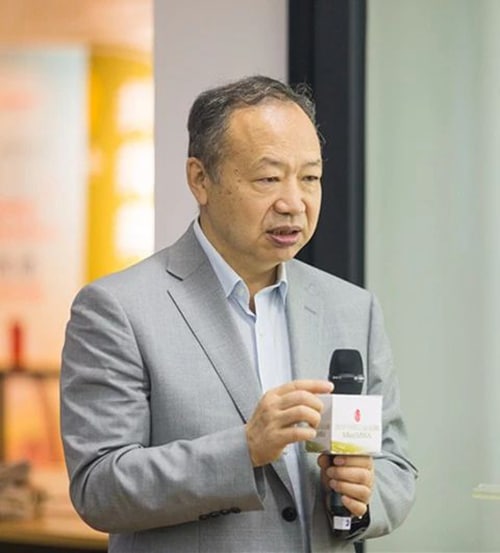 Gao Chuanjie
Gao Chuanjie
On July 10 2018, Gao Chuanjie attended a “charitable guest salon” organized by the China Charity Alliance and the Capital Charity Foundation, where he delivered a speech entitled “Preserving and Increasing the Value of Charitable Trusts and Charitable Property”. To the assembled journalists and employees of charitable organizations and trusts, Gao provided professional guidance in a range of areas, including popularizing the understanding of charitable organizations, the charitable sector’s development, evolution and future prospects, it’s routine administration, explanations of related policies, risk prevention and maintaining and increasing asset value.
According to Gao Chuanjie, charitable trusts are currently in their infancy in China. Compared with the United Kingdom and the United States, countries with well-established and stable charitable trusts, China’s charitable trusts are still in the process of growing from a “child” to a “giant”. This process not only requires improving the public’s awareness of and participation in charitable trusts; it also requires related national policies and regulations to keep pace. At present, although laws and regulations governing charitable trusts – like China’s Trust Law, the Charity Law and Charitable Trust Management Regulations – exist, gaps remain in their implementation.
Over the course of many years of developing a charitable trust system in China, imperfections in the implementation of this system have consistently led to an embarrassing situation where the work of charitable trusts is applauded but fails to attract support.
Looking back on legislative efforts to promote public trusts and charitable trusts, Gao Chuanjie lets out a sigh: “As early as 22 years ago in 1996, the Standing Committee of the National People’s Congress issued a decision regarding the establishment of a charity trust system; in 2000, the State Council approved the People’s Bank’s Trust Investment Company Management Regulations, permitting trust companies to provide charity trust services; in 2001, the National People’s Congress passed the Trust Law, again affirming charity trusts; in 2016 the plenary session of the National People’s Congress passed the Charity Law, once more clarifying regulations covering charitable trusts and recognizing the charitable trust services that charitable organizations and trust companies provide to society.
Four times charitable philanthropic trusts have been approved; four times trust companies have been approved as public welfare charitable trust service providers. More charitable organizations are becoming involved in charitable trust activities. All this exemplifies that our country’s most authoritative governing bodies take seriously the use of charitable trust systems as a means by which to develop our country’s charity and philanthropy sector.”
On July 26 2017, the China Banking Regulatory Commission and the Ministry of Civil Affairs announced that the fourth clause of the Charitable Trust Management Regulations stipulated that China encourages the development of charitable trusts, encourages natural persons, legal persons and other organizations to implement the core values of Chinese socialism, and promote the Chinese people’s traditional values and the development of charitable activities according to the law. This clause is similar to the sixty-first clause of the 2001 Trust Law, with these two clauses together expressing China’s desire to lay down a basic platform on which to develop public welfare and charitable trusts.
Gao Chuanjie believes that there is still a lot of work to be done towards putting into practice the country’s desire to encourage the development of charitable trusts.
The main problems influencing the development of charitable philanthropic trusts in China
“Long-term trust, effective management and effective encouragement are the three big challenges facing China’s charitable trust sector.” Getting straight to the point, Gao Chuanjie remarks that “presently, the main issue influencing the development of China’s charitable philanthropic trusts is the problem of tax collection.”
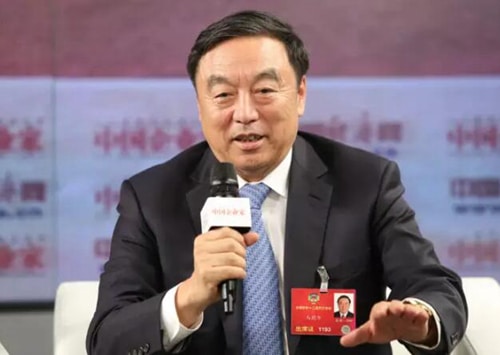
Ma Weihua, source: “China Entrepreneur”
Many in the charity sector share Gao Chuanjie’s views, including Ma Weihua, Chairman of the Board of Directors of the Shenzhen International Public Welfare College, and Zhai Meiqing, founder of the Heungkong Charitable Foundation. Both men represented the charity sector at the National Political Consultative Conference during last year’s “Two Sessions” and separately introduced two draft resolutions: “Draft Resolution Concerning Improving Charitable Trust by Supporting Policies Promoting the Healthy Development of Charitable Trusts” and “Recommendations Concerning Further Promoting the Implementation of Charitable Trusts”. This was not the first time that Ma Weihua put forward a draft resolution concerning charitable philanthropic trusts. During the Two Sessions in both 2014 and 2015, he called for the national implementation of charitable philanthropic trusts. What drew the most attention in his draft resolutions was reference to “the lack of supporting favourable tax policies”.
China clearly intends to provide charitable philanthropic trusts with favourable tax policies. According to Gao Chuanjie, during the period when the Trust Law was being drafted in the year 2000, all parties reached a consensus through discussion that the development of charitable trusts could not be separated from tax incentive measures. For this reason, the sixty-first clause of the Trust Law states that “the nation encourages the development of charitable trusts”. The 2015 draft of the Charity Law also ran into a similar matter and clarified the legal direction on this issue by noting that “it has not been put on record that charitable trusts should not receive favourable taxation rates”. The Trust Law was promulgated eighteen years ago, but favourable taxation rates for charitable philanthropic trusts have yet to be established.
The fact that the policies towards favourable taxation rates for charitable trusts are insufficient is clear from the obstacles which emerge when the trustee wants to place properties, shares and other traditional large-scale charitable assets into the trust. “When the trustee donates their house to a charitable trust, this is viewed in the same way as a commercial transaction, as a sale. When it comes to the tax rate, is this in accordance with the legislative intention of encouraging the development of charity as stipulated in the Trust Law and Charity Law?” The answer to Gao Chuanjie’s question seems obvious.
The story of glass entrepreneur Cao Dewang’s five hundred million yuan of tax evasion symbolizes the entangled resentments lying between charitable trusts and tax collection.
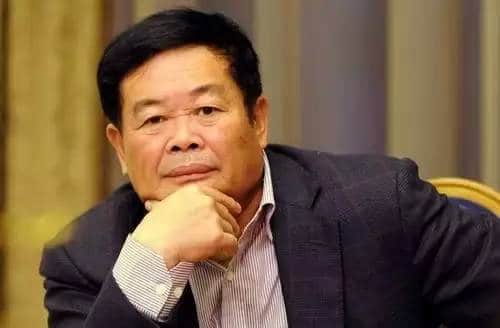
Cao Dewang Image Source: Internet
In February 2009, Cao Dewang was ready to donate 60% of his family-owned shares in the Fuyao Glass Industry Group Co. Ltd. The 3.549-billion-yuan worth of shares was to be used to establish the Heren Charity Foundation. Not long after the donation, he was informed by the State Administration of Taxation that even after the tax reduction, he still needed to pay a corporate income tax of 500 million yuan. Cao Dewang felt wronged however, since he had donated his own shares and received no income! However, at that time, the law stipulated that if ownership of stocks changed, taxes need to be paid based on “respecting sales as income.”
In April 2016, the Ministry of Finance and the State Administration of Taxation issued the “Notice Concerning the Income Tax Policy of Charitable Equity Donations.” If this Decree No. 45 had been issued earlier, Cao Dewang would not have suffered this loss.
However, Decree No. 45 is not a panacea. Although corporate income tax is exempted, charitable trusts must pay taxes when they transfer assets such as real estate and stocks. When it comes to new forms of assets like art, including famous paintings and antiques, there is no tax incentive for charitable trusts either.
As Gao Chuanjie commented: “In the short run, tax incentives for charitable trusts mainly concern the establishment of trusts. Incentives are offered in the issuing of donation invoices and donations of equity and property to the trust. In the long run, the main difficulty of tax incentives lies in the operation of charitable trusts, that is, the management and use of property by the trustee. Designing a solution for the former case is simple, but for the latter it is complicated. The two problems can be solved gradually by solving the easy one first and the harder one later.
The charitable trust tax policy should be in place as soon as possible, this has become the general consensus of the trusts, charities and academia. As Gao Chuanjie also points out, “The charitable trust preferential policy involves a small proportion of taxes, but it affects the conversion of large private wealth into public wealth. The reduction of a small amount of taxes allows the public to obtain a large amount of wealth, and the social resource mobilization effect is very prominent. Therefore, tax incentives for charitable trusts are available all over the world.”
In addition, tax incentives involve several related receipts. The receipts for charitable trusts involve coordination among various government departments such as finance, taxation, and civil affairs (and perhaps environmental protection and education), which is also likely to cause endless wrangling among departments. Charities are unable to open a special account for trust funds in the bank, and trust companies are unable to issue donation invoices to trustees and donors. If charities and trusts suffer such “discriminatory treatment,” how can charitable trusts develop in a healthy manner?
Charitable trusts and the “efficiency of charity”

The Charity Law includes a special chapter on “Charitable Trusts”. Image Source: Internet
In September 2016, after the implementation of the Charity Law, many trust companies and joint charitable organizations launched the first batch of charitable trust products despite imperfections in the current system. The situation seemed to be good, judging from the number of charitable trust filings. In the past two years, charitable trusts have shown an encouraging speed of development. In December 2017, the number of filings even reached a historic number of 14, and the total size of charitable trusts reached an even higher level.
The National Charity Information Disclosure Platform showed that as of July 11 this year, 88 charitable trusts have been filed, and the total size of the trust properties has reached 995 million yuan.
Some people also express doubts regarding the presence of charitable trusts that only contain 10,000 RMB, wondering whether their sole purpose is to improve trust companies’ ratings in regulatory evaluations. As Gao Chuanjie explains, “it is a misunderstanding to consider the establishment of charitable trusts with 10,000 yuan to be done only for improving ratings in regulatory evaluations. It is an international practice to set up charitable trusts with a small amount of money and then increase the trust property through donations or client involvement. In addition, after the establishment of a charitable trust, in order to avoid difficulties in the exercise of power of the trustees and in the management of the trust due to their being too many trustees, it is customary to decrease the number of trustees and open up to more donors.
Gao Chuanjie also emphasizes that charitable trusts should pay special attention to strengthening the division of labour between trustees and professional organizations. He points out that “trustees of charitable trust and organizations that operate charitable project are all composed of professional talents, which is of great significance to improving the efficiency of charitable trusts. Charitable trusts must firmly establish the concept of ‘public interest efficiency’ from the beginning and make good use of every cent to strive for as much public welfare as possible.
Charitable trusts should not only pay attention to the speed of development, but also to its quality and intensity. Regulatory authorities should pay attention to property encroachment and misappropriation of charitable trusts, as well as inefficiency and waste of trust property, to supervise the trustees of charitable trusts through information disclosure and effectiveness evaluation. If there are assessments there are comparisons, and comparisons will promote competition and survival of the fittest. At present, there are 800,000 non-profit organizations and 68 trust companies in the country. If everyone is concerned about the efficiency of public welfare, we can better use limited charitable property.”
Guarding realistically against the risks for charitable trusts
Like other trust activities, charitable trusts must also take measures to prevent risks. Gao Chuanjie believes that among the three types of trust activities in China, which include civil trusts, business trusts and charitable trusts, charitable trusts are the most complex, and risk prevention is of paramount importance. He also specifically states that in trust establishment, property management, and use of trust interests, focus should be on the use and distribution of trust property. The most significant risk that needs to be managed is “reputation risk,” and it can be managed through transparency of information and supervision by all parties. The person directly responsible for a “reputation risk incident” should be sanctioned sufficiently for effective deterrence.

Avoiding reputational risks is very important. Image Source: Internet
As Gao Chuanjie stresses, “transparency is the embodiment of the trustee’s loyalty and obligations. Transparency is the key to charitable trusts!” He mentions to Phoenix Charity the world-famous “double heritage” protection trust, which is the information disclosure practice of the British National Trust. “The National Trust is a large and complex charitable trust with a wide range of social participation. Its management norms and public welfare effects are outstanding. More than 50 countries and regions in the world have learned from its model.
According to the British level of information disclosure, there are three levels, “simple, medium and complex”. Charitable trusts fall into the complex range. The document for information disclosure is very detailed. All trust property and investment assets are explained, and everyone is informed of each investment product and derivative. The asset portfolio and its underlying assets are open to the public and people are informed of the trust income and of the use of that income. This is a case of transparency construction!”
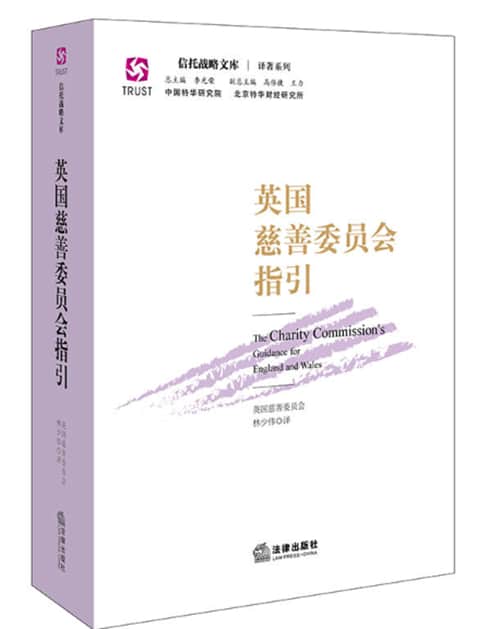
UK Charitable Committee Guide
The “UK Charitable Committee Guide” is a collection of reference material drawn from the over 100 years of management experience charities have, and is a must-read for anyone researching charitable trusts. Gao Chuanjie says “our nation is still in the primary stages of developing charitable trusts: the institutions are not yet perfect and we have little operational and managerial experience. For this reason, getting to work reading this book has been of great benefit, allowing us to study and draw upon the successes of others.”
Gao Chuanjie says “promoting society’s collective interests and noble moral sentiment is the fundamental principle behind charitable trusts; through respecting free choice by entrusting people to handle charitable affairs, realizing the optimal allocation of charitable resources and the equal development in social progress is the basic rule of the development of charitable trusts.”
Looking back at the historical development of charitable trusts, their first establishment between 1400 and 1600 was because of the great demand for them in England at that time. The 1601 Statute of Charitable Uses was the initial starting point, and even after the challenges faced over the last 418 years, it remains at the core of the UK’s charitable industry and has been of fundamental influence in its sphere across the globe. “Introducing this trust structure is crucially important to the healthy development of China’s progressing charitable industry,” Gao Chuanjie says.
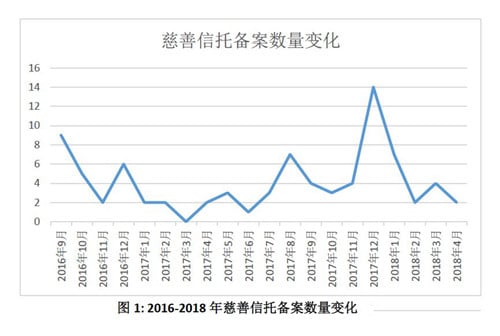
The change in number of Charitable Trusts on record between September 2016 and April 2018
Looking at the development of domestic charitable trusts, there has been clear progress from the charitable trusts as set out in theTrusts Law of 2001 to the charitable trusts as set out in the Charity Law of 2016. The Charity Law not only made it clear that these are the responsibility of the Ministry of Civil Affairs, but also basically decided the legal stipulations of the operations of charitable trusts. Currently, there are already a number of trust companies and charitable organisations that have been brave and actively launched charitable trusts.
In China, the first domestic public trust recognized by the industry was the “Xi’an Trust 5.12 Earthquake Relief Public Trust Plan”, established in Xi’an after the 2008 Wenchuan earthquake. In 2008, the China Banking Regulatory Commission issued the Notice on Encouraging Trust Companies to Develop Public Trust Businesses to Support Post-disaster Reconstruction in response to the Wenchuan Earthquake. This created breakthrough provisions on the establishment of public trusts, the monetary value of trusts, the qualifications and quantity of trustees and more. However, this Notice only applies to post-disaster reconstruction. The institutions remain low-level and it has so far not been possible to solve key incentive issues, such as tax incentives.
Since the first enactment of the law in 1601, charitable trusts have played an important role in solving social issues, improving the welfare system and promoting social progress. The ideals of the system, with its emphasis on social public interest and humans’ good moral sentiments, remain of inexhaustible vitality.
Gao Chuanjie expresses in a heartfelt manner that “people will discover in life that behind every good charitable trust there is a moving story, and there is a charitable trust owner’s pursuit of a noble moral sentiment. We ought to carry forward this tradition, and in the areas with flourishing charitable trusts such as education and poverty alleviation, we should pay close attention and promote spiritual civilization when conveying charitable wealth. Poverty alleviation should be continually encouraged, and aid should be more than simply giving money.” Giving a man a fish is not as good as teaching a man to fish, and when virtue and wealth combine, it is virtue that must take priority.
“Let charitable trusts of every size spread like stars to cities and towns of every size across our nation, and let millions of people’s mood towards charity and goodness transform into reality, helping them to leave behind in this world good intentions and charitable footprints.” This is the vision of a generation of charitable trustees, such as Gao Chuanjie, who look forward to seeing the resplendent starry sky, but who also recognise that we must wait through a great number of ordinary dawns before this can happen. (Interview conducted by: Ma Mingyue, with thanks to the China Charity Federation for supporting this article.)
Gao Chuanjie
Gao Chuanjie previously worked in the General Office of the State Council, the People’s Bank of China, the China Banking Regulatory Commission, the China Construction Bank Investment Corporation, the CIC Trust Company, and the China Everbright Industrial (Group) Corporation among others. Now he is a tutor on the Tehua Post-Doctoral Research Program, as well as at Renmin University of China and at the Southwest University of Political Science and Law. He is also an Honorary Advisor of the China Charity Research Institute and the China Charity AllianceTrust Committee.
He has long researched the scientific development of China’s trust industry, has participated in developing the legislation of China’s Trust Law and Charity Law, and presided over the formulation and implementation of China’s trust company management and supervision system.

